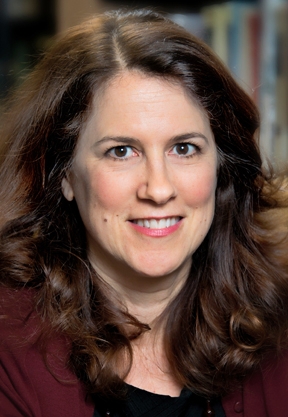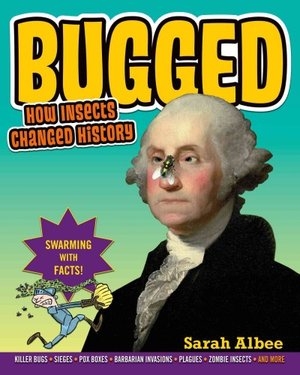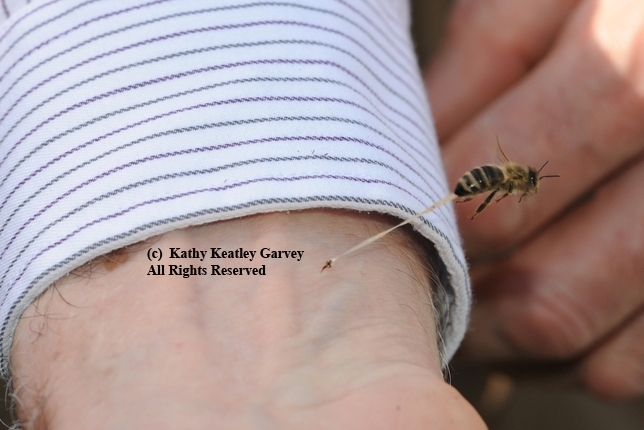
Why shouldn't there be?
When you pick up Sarah Albee's book, Bugged: How Insects Changed the World, you'll also see and read about mosquitoes, honey bees, beetles, fleas, bedbugs, mayflies, praying mantids, silkworms, and assorted other insects, or what she calls “The Good, The Bad and the Uggy.”
An entomologist's favorite subject. A kid's delight. A history book like no other.
Newly published by Walker Books for Young Readers (Bloomsbury), Bugged is about how insects influenced human history not only in America but throughout the world. It's especially good reading on the Fourth of July, Independence Day, when you're focused on fireflies and fireworks and pondering parades and picnics. (That's what I did today!)
Frankly, it's delightful to see a children's book on bugs (it's targeted for readers 8 and up but actually, it a good book for adults, too). It's not your usual history book: it's an easy-to-read, fun and cleverly written book full of sidebars, photos, cartoons, and illustrations.
Bugs, as we all know are loved, hated, feared, scorned or shunned. And misunderstood.

“Most of my books and blog posts tend to be where science and history meet up--my goal is always to find a topic that is interesting and accessible to kids and get them interested in history,” Albee told us. In her last book, Poop Happened: A History of the World from the Bottom Up, she devoted an entire chapter about "filth diseases," or insect-vectored diseases.
“That's what gave me the idea to do a whole book about them,” she said.
Albee, who says her inner child is 12 years old, loves bugs that are cool, amazing or just plain gross. No fairy tales here. No “Buttercup Goes to the Ball” here.
In her childhood, “I was the kind of kid that was always outside exploring, collecting, catching,” the Connecticut resident acknowledged.
In her book, Albee touches on what she calls “the bad-news bugs”:
- Public Enemy No. 1, the mosquito (think of all the mosquito-borne diseases, including malaria, yellow fever and dengue)
- Public Enemy No. 2, the fly (it's to blame for sleeping sickness, typhoid and leishmaniasis, among others)
- Public Enemy No. 3, the flea (Remember the Oriental rat flea transmitted the bubonic plague?)
- Public Enemy, No. 4, the louse (Note: these critters, head lice and body lice, are not your friends. They may be close and personal but they are not your friends)
The beneficial insects, including honey bees, come into play, too. (And why not? There's a "bee" in her last name!) Albee points out that honey bees are not native to America; European colonists brought them here in 1622. She also touches on honey bee health, mentioning the mysterious colony collapse disorder, characterized by adult bee abandoning the hive, leaving behind the queen bee and brood.
Although many people are afraid of bee stings, bee venom is “used to treat patients suffering from many ailments, including arthritis, back pain and skin conditions because it contains melittin, which is an anti-inflammatory substance,” Albee explains.
Reactions of little kids to her book? “It's been really great to see how much kids like the book," she said. "At school visits I use volunteers who dress up as doctors, and others as patients, and together we try to diagnose the insect-vectored diseases they're suffering from. Kids love the remedies we try--dosing with mercury, quarantine, bleeding and cupping, smoking cigars--all pretend of course."
Back to George Washington. If you don't know this, insects figured in our country's founding when we were battling Great Britain for our independence. As Albee correctly points out: Gen. George Washington “had both the female mosquito and the body louse on his side.”
She tells all in her chapter on “How Revolutionary!”
Related links:
Sarah Albee website
Sarah Albee interview with National Public Radio
Sarah Albee interview with the School Library journal
Attached Images:
